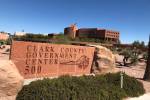Sometimes, the simplest solution can be found right under our nose
Have you ever noticed that sometimes we look for solutions in all the wrong places, only to finally realize that the answer is right in front of us? How many of us have spent time looking for our sunglasses, only to have a friend point out with a smile that they are right on top of our head? Or, how about trying to figure out what’s wrong with the stereo or some other appliance, looking for every complex reason why it’s not working, then finally realizing that it was not plugged in?
It’s human nature to skip over the obvious sometimes. We’re complex creatures and we often imagine complex answers to even the most basic problems. As we’ve found through painful experience, the complex systems we design often can backfire, ultimately causing more problems than they solve. The most elegant solutions are often not only simple, but cost-effective and healthier, as well.
Let’s examine the issues of energy and water. These are so closely intertwined they are practically joined at the hip. It takes a lot of water to produce electricity. It takes a lot of electricity to provide our water. In fact, a representative of the Southern Nevada Water Authority recently explained that in the peak of summer, the amount of water pumped from Lake Mead equals the equivalent weight of the entire Hoover Dam — every three days. Imagine how much electricity is consumed to achieve this and, by extension, the amount of pollution and greenhouse gasses those power plants release into the atmosphere, just so we can water the grass.
And that is truly where most of our water is used — on irrigation. Growing grass in our climate is like Scotland using blow dryers to create desert areas for off-road racing. Can you imagine how much fun Rube Goldberg would have had with that idea?
Our society has evolved within a framework of natural resource abundance. That framework is straining since there’s no longer just a few of us that are in need of these resources. We’re caught in a delicate, and very serious, balancing act between growth and resource management. So, where am I going with all this? It’s that simple yet elegant solution called efficiency. Whether we own a home, rent an apartment, run a business or work for the government, each of us can have an impact by adopting or promoting the most efficient use of water and power.
The Southern Nevada Water Authority has a great rebate program for converting existing lawns to water-smart landscaping. At $2 per square foot, it’s an offer any conscientious citizen should not refuse. The rebate program has been in effect for several years and is considered very successful, but there is still an incredible amount of grass that must be turned into beautiful landscaping that is compatible with our locale. It is also an excellent time to take advantage of the program since the $2-per-square-foot rebate amount is currently scheduled only through Dec. 31.
Those of us who live in a community with water features should be taking action to get them turned off until the drought is clearly over. Remember, every gallon we avoid pumping lessens the energy we must generate.
On the energy front, I have a question. Why do so many people have lights in their yards or on their homes that run all night? Consider for a moment the incredible amount of energy it takes to provide artificial lighting from dawn to dusk. We might not be able to turn of every other streetlight (although that’s not a bad idea), but we can certainly turn off those extra lights on our property that no one really needs.
I don’t consider it a sacrifice to allow a palm tree a good night’s rest rather than having to stand brightly illuminated all night just in case someone might wake up and want to go see it. We’re burning millions of watts to light up the night and obliterate our view of nature’s beautiful night sky, all at considerable economic and environmental expense. Considering the problems we face, it almost seems absurd.
Nevada Power has some good programs that promote efficiency for both homes and businesses. These programs work and create results. I suggest taking them up on their offer to help in any that are appropriate for your situation. Remember, every kilowatt hour saved also conserves precious water.
Water and power. Power and water. They go hand in hand. They are the lifeblood of our community. It takes each one to provide the other. This symbiotic relationship underscores the seamless interconnection of every aspect of our world. By taking massive action to embrace water and energy efficiency now, we get to build a better, more resilient community for everyone.
Let’s not skip over the obvious. We cannot afford to wait until there’s no longer any choice. This is clearly a case where the answers to some of our most pressing issues have been right in front of our noses all along.
Steve Rypka is a green living consultant and president of GreenDream Enterprises, specializing in renewable energy, green building, alternative transportation and lifestyle choices for both residential and commercial clients. The company is committed to helping people live lighter on the planet. Steve can be reached via e-mail at steve@greendream.biz. More information relating to this column is posted at www.greendream.biz.


















